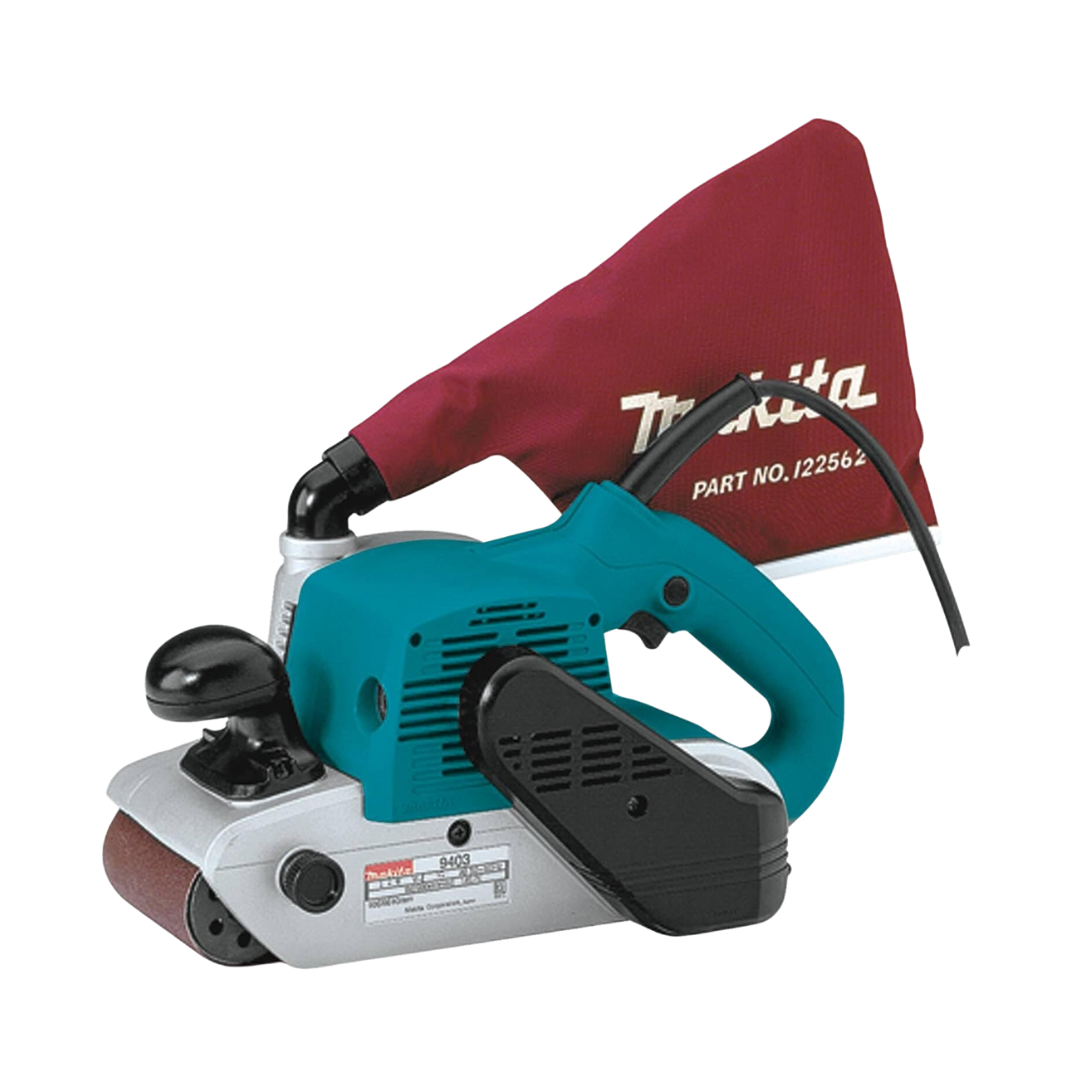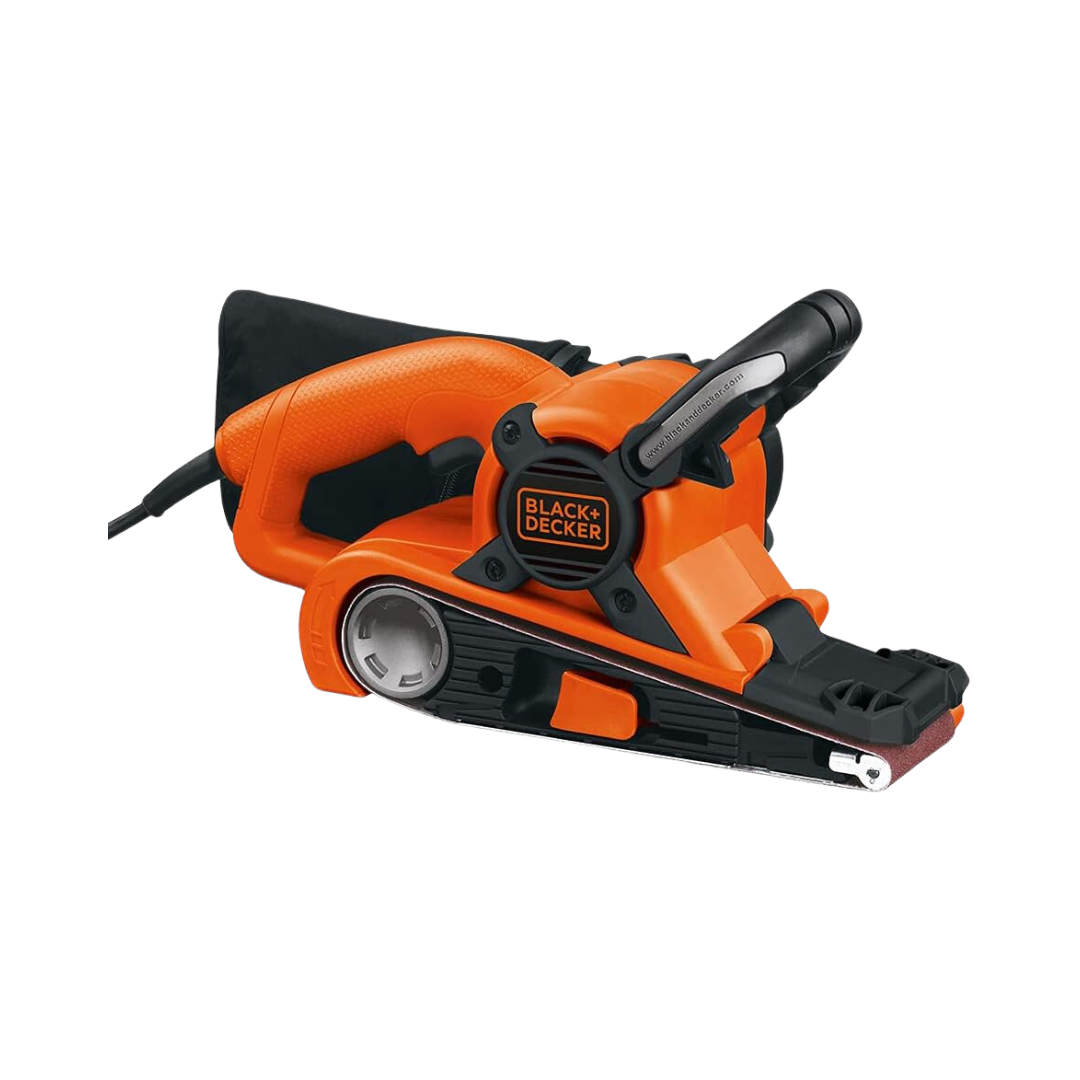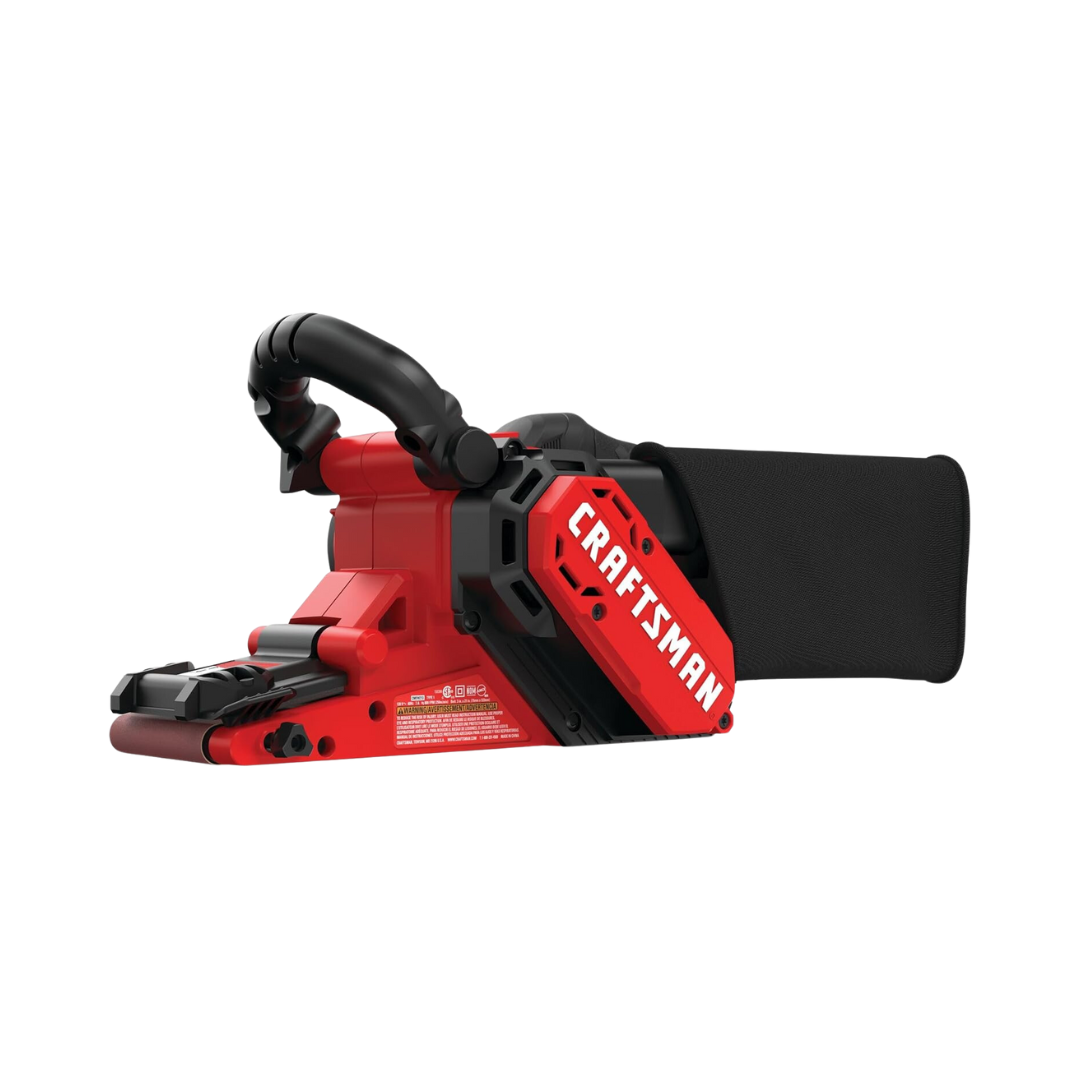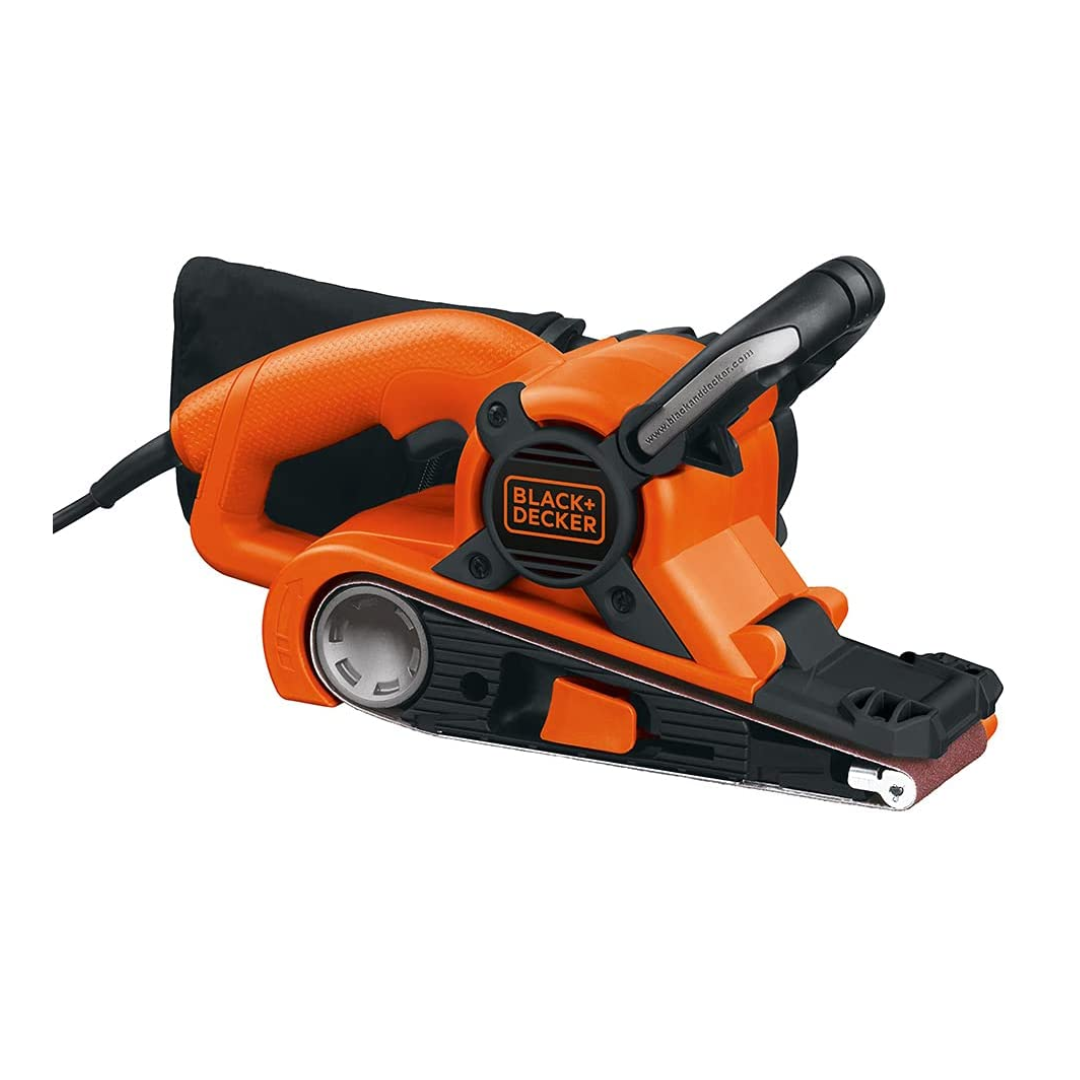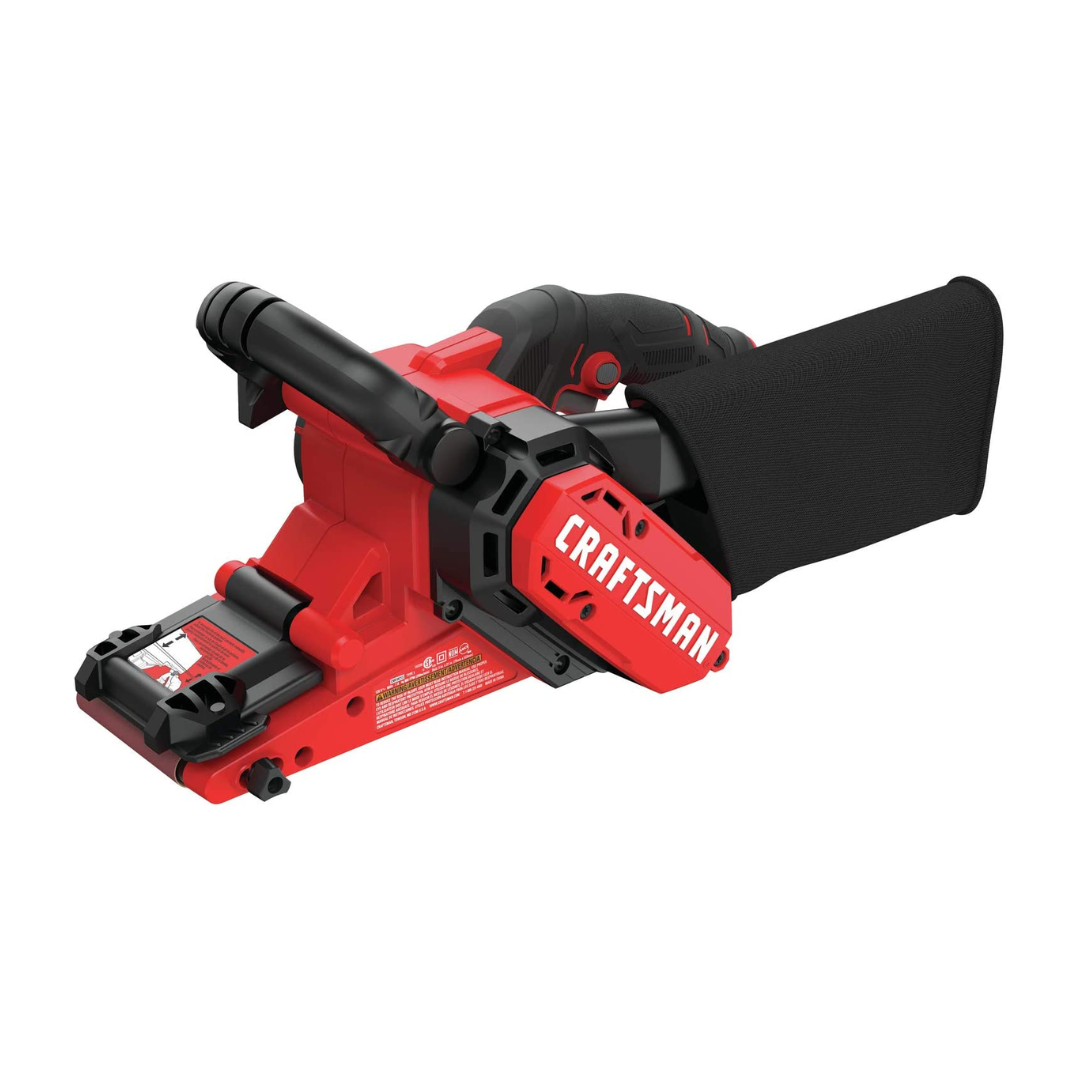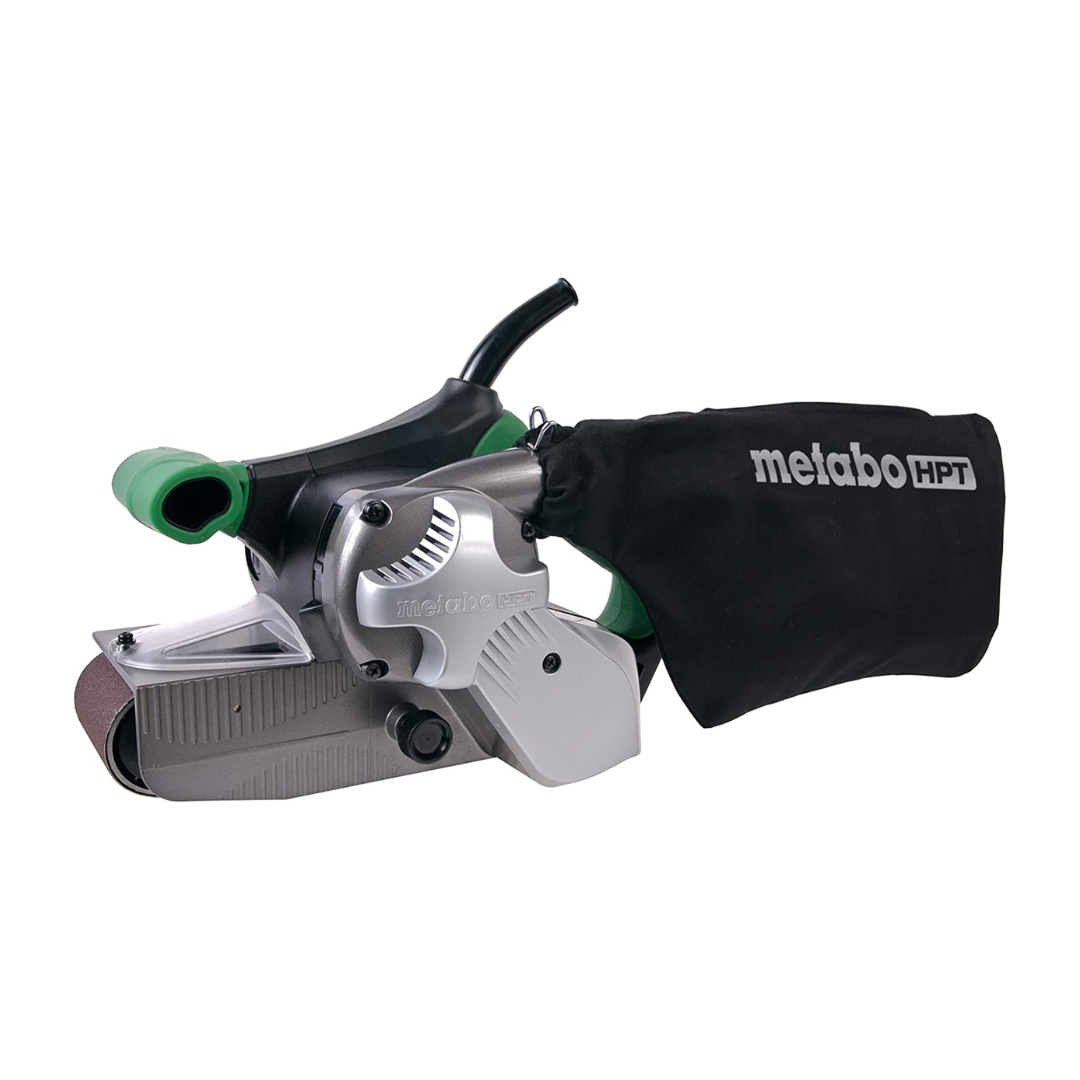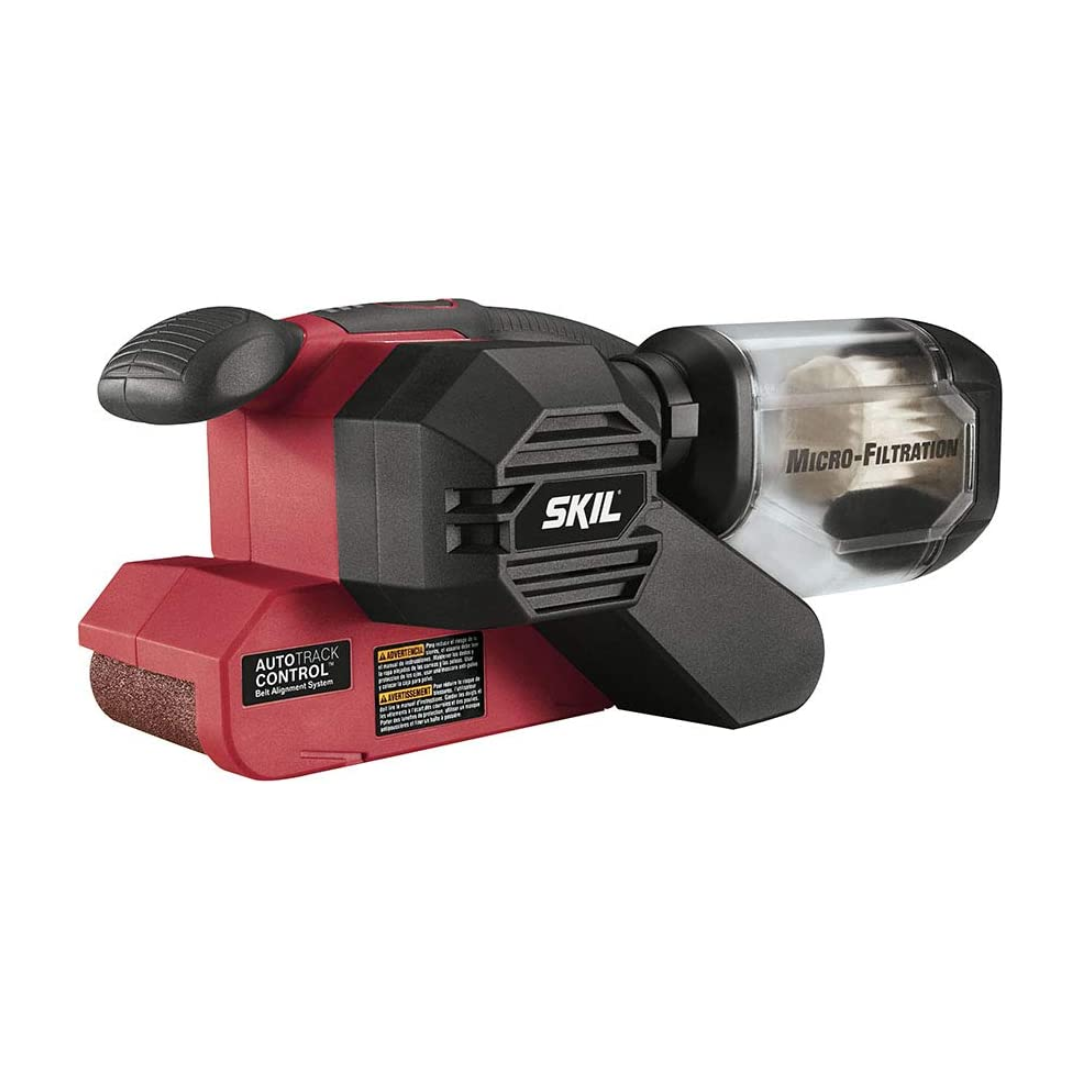We may be compensated if you purchase through links on our website. Our team is committed to delivering honest, objective, and independent reviews on home products and services.
Belt sanders are easy-to-use tools for smoothing rough areas, leveling large surfaces, or trimming to a scribed line. Unlike random orbital sanders, belt sanders produce a linear motion, allowing you to sand with the grain.
To provide a little tool buying help, our team has researched the latest and best belt sanders on the market. Here are our top recommendations.
Top 5 Belt Sanders
*Links open to product retail page.
- Best Overall: Makita 9403 Belt Sander
- Best Light-Duty: BLACK+DECKER Belt Sander
- Most Ergonomic: CRAFTSMAN Belt Sander
- Best Variable Speed: Metabo HPT Belt Sander
- Best Feature Set: SKIL 6 Amp Belt Sander
Compare Top Belt Sanders
| Product | Max Speed | Belt Size | Motor | Warranty |
|---|---|---|---|---|
| Makita 9403 Belt Sander | 1,640 FPM | 4 x 24 inches | 11 amps | 1-year |
| BLACK+DECKER Belt Sander | 800 FPM | 3 x 21 inches | 7 amps | 2-year |
| CRAFTSMAN Belt Sander | 800 FPM | 3 x 21 inches | 7 amps | 3-year |
| Metabo HPT Belt Sander | 1,475 FPM | 3 x 21 inches | 9 amps | 5-year |
| SKIL 6 Amp Belt Sander | 1,050 FPM | 3 x 18 inches | 6 amps | 5-year |
| Product | Max Speed | Belt Size | Motor | Warranty |
Best Overall
Key Features
- Size: 4 x 24 inches
- Motor: 11 amps
- Features: Low 84 dB noise level
- Warranty: 1-year limited
Pros and Cons
✔ Operates at a low 84 dB noise level
✔ Sands up to 1,640
✘ Design is on the heavier side
✘ Dust collection bin may require more maintenance than usual
What Customers Are Saying
Our buyer-related research revealed that satisfied customers liked that this belt sander operated quietly and delivered smooth results with minimal effort. Others were satisfied with its power, noting that it was efficient for big projects, such as sanding a large deck, in a short amount of time. However, we also discovered that a minority of customers felt this sander was overly heavy, making it difficult to use. Others had problems with the dust collector breaking off after minimal use.
Best Light-Duty
Key Features
- Size: 3 x 21 inches
- Motor: 7 amps
- Features: Three-position adjustable handle
- Warranty: 2-year
Pros and Cons
✔ Features an adjustable handle
✔ Sands up to 800 FPM
✘ Lacks power for heavy-duty work
✘ Does not include some settings found in competing models
What Customers Are Saying
During our verified buyer research, we found that most customers liked this sander for its excellent performance, with many reviewers noting it was the perfect device for small jobs. Others liked its front flip-up feature and its adjustable handle positions. On the other hand, we also found that some reviewers felt this belt sander had fewer features than similar products. Others felt it didn’t have a high enough power level to work efficiently.
Most Ergonomic
Key Features
- Size: 3 x 21 inches
- Motor: 7 amps
- Features: Angled belt that allows sanding closer to adjoining surfaces
- Warranty: 3-year limited
Pros and Cons
✔ Design allows for precision sanding
✔ Sands up to 800 FPM
✘ Small dustbag requires frequent emptying
✘ Lacks power for heavy-duty work
What Customers Are Saying
Our team found that customers who liked this belt sander said it was lightweight and comfortable in their hands. Others liked its powerful motor for small jobs and its excellent value. However, we came across a few customer reviews that said the sander could have had more power and noted that the dust collector bag was small. Others said it made loud noises while in use.
Best Variable Speed
Key Features
- Size: 3 x 21 inches
- Motor: 9 amps
- Features: Adjustable speed control between 820 and 1,475 FPM
- Warranty: 5-year limited
Pros and Cons
✔ Sands up to 1,475 FPM
✔ Includes a 5-year warranty
✘ Dust collection system is suboptimal
✘ Design is on the heavier side
What Customers Are Saying
According to our research, those who left positive reviews for this belt sander liked its ergonomic design, high power level, and sturdiness. However, we learned that some customers found this sander had poor dust collection. Others felt it was cumbersome to use and overly heavy.
Best Feature Set
Key Features
- Size: 3 x 18 inches
- Motor: 6 amps
- Features: Automatic track belt alignment that keeps the belt centered
- Warranty: 5-year limited
Pros and Cons
✔ Sands up to 1,050 FPM
✔ Includes a 5-year warranty
✘ Dust collection may be poor compared to some similar models
✘ Unit may overheat after prolonged use
What Customers Are Saying
Our consumer review research showed that several customers liked this belt sander’s easy maneuverability and quick belt changes. Other positive reviews mentioned that it was quiet while operating. However, we found that some buyers felt that the dust collection was inefficient, and two customers encountered overheating issues.
Belt Sander Buying Guide
Before purchasing any woodworking tool, it’s important to consider how its specifications and features impact its performance. Consider the following five factors when shopping for a belt sander.
Belt Sander Size
A belt sander’s size refers to the dimensions of its belt, expressed in length and width. A belt sander’s size impacts the total area it can sand at once, with wider and longer sanders polishing a larger area than smaller models. Most belt sanders are 3 inches wide and 21 inches long, but some models can sand larger areas.
Dust Collection
Sanding wood kicks dust and debris into the air, covering your workstation and irritating your respiratory system. Most belt sanders come with a dust collection bag that traps the sanded grit before it’s released into the air.
Sander Handle
Belt sanders offer different ways of controlling the tool to deliver a precise polish to your workpiece. For example, some sanders have rear handles and three-position front handles to give customers an adjustable grip. Other models have a front-facing ergonomic handle that provides additional support while sanding.
Speed Control
The speed of a belt sander is measured in FPM. Some belt sanders don’t have speed settings and are single-speed models, while other models have variable speed control with adjustable FPMs to match a range of applications.
Sandpaper Grit
A belt sander’s grit is a rating that refers to the size of the sandpaper abrasive, with a larger grit signaling a finer texture and a smaller grit referring to a coarse, abrasive texture.
Most models have a grit number of around 80, which is coarse enough to remove varnish but gentle enough to prepare wood for finishing.
Some models offer a coarse grit belt that can remove a layer of debris from a workpiece.
Brand
Although there are dozens of brands that make belt sanders, purchasing one from a reliable company will help ensure you get a high-quality product. Some of the most-trusted belt sander manufacturers are:
- BLACK + DECKER
- Bucktool
- CRAFTSMAN
- DEWALT
- Makita
- Metabo
- Porter Cable
- Skil
- Triton
- WEN
Tips for Using a Belt Sander
Belt sanders are simple machines to operate with a little practice, and they can be incredibly useful in smoothing or leveling surfaces, as well as other sanding jobs. However, there are certain best practices you should keep in mind when using a belt sander to ensure you get the best results.
Keep Your Surface Straight
Moving the sander in as smooth and consistent a motion as possible is essential in evening out surfaces. If using a corded belt sander, ensure the power cord is out of the way and that your work area is flat and straight.
Wear Hearing and Other Protection
Belt sanders are loud devices, so it’s important to wear hearing protection. Work gloves can help protect your hands, and a dust mask will ensure that you don’t breathe in fine particles.
Move the Sander in the Grain’s Direction
Going with the grain while operating sanding tools will generate the best results. Move the sander back and forth in a rhythmic motion.
Don’t Apply Pressure
Let the weight of the sander apply its own pressure. You don’t need to add more force to properly do the job.
Unplug Before Changing Belts or Emptying the Dust Bag
Leaving a sander on while changing belts or emptying a bag could lead to serious injury.
Use a Stop to Keep the Sander in Place
While clamps would get in the way of your work, a stop will help keep your sander in place and stop it from sliding across the work area as you operate it.
Go Slowly
When using a belt sander, it’s better to be safe than sorry. Go in one long stroke, then move the sander to the side by half of that distance to ensure full surface coverage. Going slowly will help ensure you don’t change the speed or direction, which could ruin the material.
Belt Sander FAQs
What is a belt sander used for?
A belt sander is used to polish, level, and shape rough wood surfaces by applying motorized power to abrasive sandpaper.
How much weight should I apply to a belt sander?
You should not apply weight when using a belt sander. Belt sanders have enough power without requiring the need for additional manual effort. When guiding your belt sander across a workpiece, there’s no need to lean on the sander to help it perform better.
What’s the difference between a belt sander and an orbital sander?
A belt sander polishes wood and other surfaces by using sandpaper that continuously loops, whereas an orbital sander is equipped with sanding discs that polish in small circles. Belt sanders are typically used for larger sanding projects, while orbital sanders are used for small spot treatments.
How We Selected the Best Belt Sanders
To provide our readers with the best sander recommendations possible for their sanding tasks, we rely on several key sources of information to help guide our selection process.
Initial Research: Our research process began by generating a list of best sanders with a significant number of verified-buyer reviews and an average customer review rating of 4–5 stars. We looked at positive and negative reviews alike, focusing on information from both satisfied and critical buyers.
Expert Insights: Through our years of experience, we’ve learned that listening to what others have to say is critical to building accurate, well-rounded articles. To complement our in-house expertise, our team looked at reviews and videos from trusted publications and independent testers, spoke with subject matter experts, and drew insights from reader contributions.
Final Product Selection: We then began fine-tuning our list by replacing older models with the latest versions and eliminating any discontinued models. From there, we pared the list down further by comparing each model’s feature set and selecting the best-in-class options for a variety of buyers, budgets, and scenarios.
Why You Can Trust Us
This Old House has empowered homeowners and DIYers for more than four decades with top-notch home improvement advice in the form of television programs, print media, and digital content.
Our team focuses on creating in-depth product and service review content. To date, we’ve published numerous tool reviews, from cordless drills and impact drivers to tape measures and laser levels.
Once we conclude our research, we craft a comprehensive, user-friendly article of recommended products and additional information to help our readers make the right purchase.
Questions or Comments?
To share feedback or ask a question about this article, send a note to our team at reviews@thisoldhousereviews.com.
